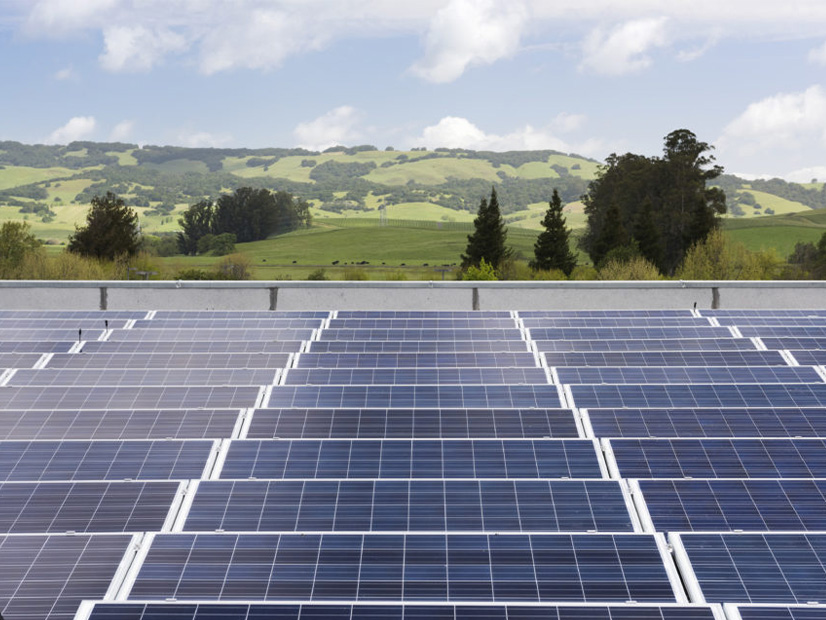
ISO-NE has work to do to make itself compliant with Order 2222, FERC said in an order late Wednesday (ER22-983).
Similarly to how it has responded to other RTOs’ compliance filings on the landmark rule requiring RTOs to open their markets to distributed energy resource aggregations (DERAs), the commission accepted some of ISO-NE’s effort and rejected other parts.
The order makes ISO-NE responsible for several follow-up compliance documents containing revisions, with various deadlines between 30 and 180 days.
Renewable energy groups and others in New England had criticized ISO-NE for not going far enough to remove barriers for DERs to participate in wholesale markets, and some of those complaints were addressed by FERC.
“We find that ISO-NE has failed to demonstrate that its proposed energy and ancillary services market participation models for DERAs accommodate the physical and operational characteristics of behind-the-meter DERs, because behind-the-meter DERs participating under those participation models may be unable to provide all services that they are technically capable of providing through aggregation.”
The federal agency flagged ISO-NE’s choice to require measurement of behind-the-meter DERs at the retail delivery point for most DERs, rather than allowing sub-metering.
The commission sent back several other items for ISO-NE to revise or, in some cases, further explain.
ISO-NE had proposed five existing and two new models for DERs seeking to participate in the markets. (See NEPOOL PC Approves Tariff Changes for Aggregated DERs.)
FERC challenged the RTO’s requirement limiting the storage participation model — comprised of a binary storage facility or continuous storage facility — to load-serving entities (LSEs).
“ISO-NE fails to cite to any tariff provisions that establish this LSE requirement and therefore has not demonstrated that this LSE requirement is an existing requirement applicable to all resources in order to provide wholesale energy withdrawal service in ISO-NE’s energy market,” FERC wrote, requiring the RTO to explain it further as part of a 60-day compliance filing.
“The commission has given a pretty good overview of why ISO’s proposal isn’t reasonable and doesn’t meet the requirements of Order 2222,” said Caitlin Marquis, managing director of Advanced Energy United, the clean energy trade group that has been one of ISO-NE’s most vocal critics on the issue.
“One of our biggest issues with ISO’s filing is that it failed to accommodate behind-the-meter DERs, so I was pleased to see that the commission also felt that ISO had failed to accommodate the physical and operational characteristics of behind-the-meter DERs,” she said.
“We are pleased that the commission accepted most of our compliance filing, with a few things left to work on, which is common in these types of orders,” said ISO-NE spokesperson Matt Kakley. “We’ll be reviewing the decision and then responding as directed.”
Commissioners’ Commentaries
In a sharply-worded concurrence, Commissioner Allison Clements noted that the ISO-NE proposal was “almost universally panned by prospective market participants seeking to integrate behind-the-meter resources into its markets.”
She described the grid operator’s response as being especially deficient when compared to other RTOs, for example in its approach to submetering. She said that the other grid operators have figured out how to manage that question without blocking DERs from participating at all.
“ISO New England is like an architect declaring that it is impossible to construct higher than a 50-story building, even as competitors have already built the Empire State Building and Sears Tower, and are making plans for One World Trade Center,” she wrote.
She called on the grid operator to use its follow-up compliance filings to “roll up its sleeves and pursue a problem-solving approach to integrating behind-the-meter resources,” rather than “rigidly defend a status quo metering framework that stymies this critical opportunity to improve reliability.”
The commission’s two Republican commissioners both took the opportunity to bash Order 2222 itself: James Danly wrote that he dissented against it, and Mark Christie said he would have if he was on the commission at the time it was approved. But they took different approaches to the compliance filing, with Danly concurring with the majority and Christie dissenting.
“I do not envy ISO-NE and NEPOOL the compliance task we imposed upon them. One hundred percent compliance probably is impossible in a first, or perhaps even second, attempt. We shall see,” Danly wrote, calling 2222 “intrusive interference into the administration of RTO markets and distribution-level systems.”
Christie offered a similar take.
“The problems and complexities of complying with Order No. 2222 are extreme,” he wrote. “This is no surprise to anyone who has studied Order Nos. 2222 and its progeny.”
He chastised the majority for taking issue with ISO-NE’s metering proposal.
“After all of the effort and expense invested by ISO-NE and all of the various state entities and market participants, to require even more detail on the compliance proposal when the record makes clear to me that the proposal has met the requirements imposed by Order No. 2222, is not something I can support,” Christie wrote.
